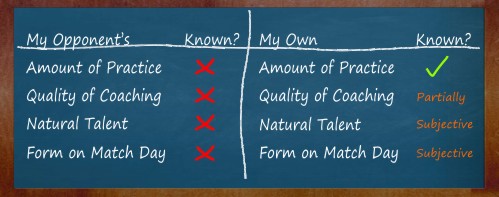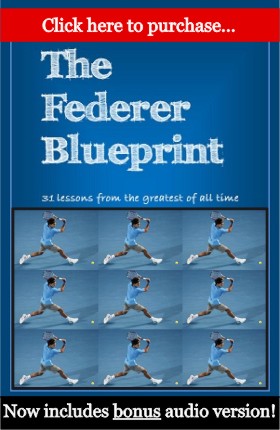Limitless: What if your speed and reaction time were unlimited?
19 Nov
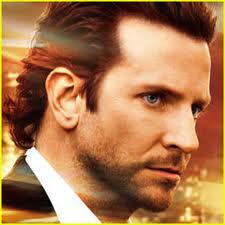
Desmond Douglas, now aged 56. What's his secret?
Matthew Syed in Bounce [1] recounts the story of the time Desmond Douglas (a top table-tennis player with world-renowned lightning-quick reflexes) was given a test of his reaction speed. The test involved pushing a button in response to a light cue, and to everyone’s amazement he was found to have the slowest reaction time of the entire England team. The result was so surprising that the machine was initially thought to be faulty, but this result has been repeated time and time again with other athletes. So how did a man with the reaction time of Jabba-the-Hut become the quickest of the quick in a sport where speed is everything?
Experts are much faster than less accomplished performers. But surprisingly, superior speed in their sport of expertise does not show up in general tests of their speed. In tests outside their domain of expertise they perform no better than any average person. This even includes skills that are very relevant to an activity such as the finger speed of expert typists. Surely fast typists have fast finger speed? Nope. This has been studied and the results are in…just average [2]. Yet these people clearly are able to move and react more quickly while performing, so what is happening?
So where do top athletes get their speed?
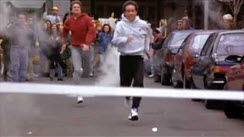 Syed explains that the secret lies in the extensive knowledge they have acquired in their domain of expertise. This knowledge (gained only by experience) allows athletes to react to subtle cues to anticipate events before they happen. In typing it means being able to read ahead to anticipate what words are coming up and cut down the time between successive letters. For table tennis champion Desmond Douglas, he was able to react to cues in his opponent’s movements to anticipate where they would hit the ball next. He was therefore able to start moving in the right direction much earlier, rather than waiting to see where the ball was going before reacting. In this way, experts find shortcuts that allow them to bypass the normal restrictions imposed by basic physical abilities. [2][3][4] Wow! This is probably why the very best are seemingly able to perform super-human feats.
Syed explains that the secret lies in the extensive knowledge they have acquired in their domain of expertise. This knowledge (gained only by experience) allows athletes to react to subtle cues to anticipate events before they happen. In typing it means being able to read ahead to anticipate what words are coming up and cut down the time between successive letters. For table tennis champion Desmond Douglas, he was able to react to cues in his opponent’s movements to anticipate where they would hit the ball next. He was therefore able to start moving in the right direction much earlier, rather than waiting to see where the ball was going before reacting. In this way, experts find shortcuts that allow them to bypass the normal restrictions imposed by basic physical abilities. [2][3][4] Wow! This is probably why the very best are seemingly able to perform super-human feats.
“Experts find shortcuts that allow them to bypass the normal
restrictions imposed by basic physical abilities”
Evidence from tennis research
Abernethy and Russel (1987) studied the returns of tennis and badminton players specifically, and found that top players can anticipate where their opponent is going to hit the ball (or shuttle) better than novice players. This was due to expert players picking up cues earlier during the service or hitting action of their opponent before the ball was struck. They concluded that an expert returner’s ability to return is not limited by his or her raw reaction time, but instead relies on his or her deep tennis knowledge, which is gained from extensive experience and allows them to read the server’s action. These conclusions are supported by the findings of a 2005 study [4] which showed that skilled tennis players responded more than 25% faster when returning a groundstroke performed by a human opponent compared to a ball machine. This difference was due to being able to see the movement pattern of the player. They found the 50 millisecond time saving would allow the player to increase his or her court coverage by as much as 1.2 m (0.6 m on both the forehand and backhand sides). [Edit: Is it just me or do Roger, Rafa, and Nole all come to mind here???]
Hallmark of a champion?
This ability to anticipate is an example of heightened awareness in game situations, which defines sporting greats perhaps more than any other quality or skill, and tennis is no exception. Roger Federer himself has stated that his powers of anticipation are critical to the superiority of his game: “I have the impression that I sense how a ball is coming and my reactions are automatic”. [5] The great Australian coach Tony Roche knows better than most what makes a tennis champion, and has said of Roger: “He’s never in a hurry…The hallmark of champions in every kind of sport is that they have more time than others”.
Another shining example of this hallmark was Wayne Gretzky, one of the most dominant athletes in all of professional sport. He was said to have an incredible ability to skate “ahead of the puck”, turning up at the right spot before the puck got there. But Gretzky, more than anyone, was aware that it was not because he had faster reactions or was a faster skater than the rest. He readily admits: “I wasn’t naturally gifted in terms of size and speed; everything I did in hockey I worked for” ”The highest compliment you can pay me is to say that I worked hard every day…That’s how I came to know where the puck was going before it even got there”. [3]
A death blow for natural talent?
Let’s add the following points to our growing case against natural talent (for more see previous posts on natural talent and the 10000 hour rule):
1) For expert performers, the speed and fluency of their complex motor skills do not depend on raw reaction times or faster muscle contractions or the speeds of the individual movements that make up the skill. Instead, it is more important how a series of skills is put together [2].
2) This means that the speed of your motor skills can be faster than predicted by the speed of each of your individual movements or reactions.
3) This insight opposes the idea that our fixed attributes can limit our ultimate performance level.
4) These findings are so powerful because speed and reaction time are exactly those abilities that are most often cited as innate and unchangeable. They lie at the heart of the natural talent myth.
Great. But what does all this mean for my tennis?
Yes, there will be a time early in your learning curve when you will be limited by your physical constraints. You will see the ball coming towards you, then decide which shot to play, then run to the ball, then hit your shot, then wait for the ball to come back. But with experience you will learn to integrate these skills into a fluent sequence of overlapping skills. The experts are defined by their ability to put these skills together with speed, accuracy, fluency, and consistency.
Just to repeat once more: No matter what people will tell you (and they will tell you!), expert speed and reaction time and other tennis skills ARE NOT limited by innate/inborn/genetic abilities. This means that you DO NOT need to be born or blessed with any of these abilities. The critical point here is not just that they can be learned, but that they can ONLY be learned.
[Edit: I just re-read this post and am still blown away by the idea that you can literally become super-human (think Jordan, Gretzky, Pele, Federer,…), and your abilities are indeed limitless!]

Next Post: How you can benefit from the myth of natural talent
The myth of natural talent remains popular for a number of reasons. Fortunately you can use this convincing illusion to help advance your own (or your child’s) career.
References:
[1] Syed, M. (2010) Bounce: How champions are made
[2] Ericsson, K.A., Krampe, R.T., Tesch-Romer, C. (1993) The role of deliberate practice in the acquisition of expert performance. Psychological Review, Vol. 100, No. 3, 363-406.
[3] Abernethy and Russell (1987)The relationship between expertise and visual search strategy in a racquet sport. Human Movement Science, Vol. 6, Issue 4, p283-319.
[4] Shim, J., Carlton, L. G., Chow, J., & Chae, W. (2005). The use of anticipatory visual cues for highly skilled tennis players. Journal of Motor Behavior, 37, 164-175.
[5] Stauffer, R. (2006) Quest for Perfection: The Roger Federer Story.

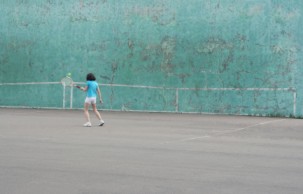 Two prominent researchers in psychology Herbert Simon and Bill Chase noted in their 1973 study that no-one seemed to reach the top ranks of chess without a decade or more of intensive study [1]. Following this observation it was proposed that no-one had achieved world-class expertise without 10 years of intensive practice in
Two prominent researchers in psychology Herbert Simon and Bill Chase noted in their 1973 study that no-one seemed to reach the top ranks of chess without a decade or more of intensive study [1]. Following this observation it was proposed that no-one had achieved world-class expertise without 10 years of intensive practice in 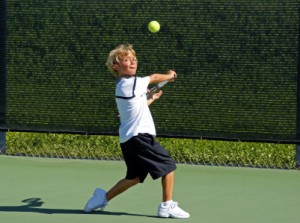 Natural talent has been the focus of many studies designed to reveal the secrets of top performers. Such studies asked: What makes the world’s top performers the best at what they do? And many expected to reveal that there are certain people who learn much more quickly than others in their chosen activity, and progress their skills more rapidly.
Natural talent has been the focus of many studies designed to reveal the secrets of top performers. Such studies asked: What makes the world’s top performers the best at what they do? And many expected to reveal that there are certain people who learn much more quickly than others in their chosen activity, and progress their skills more rapidly.
